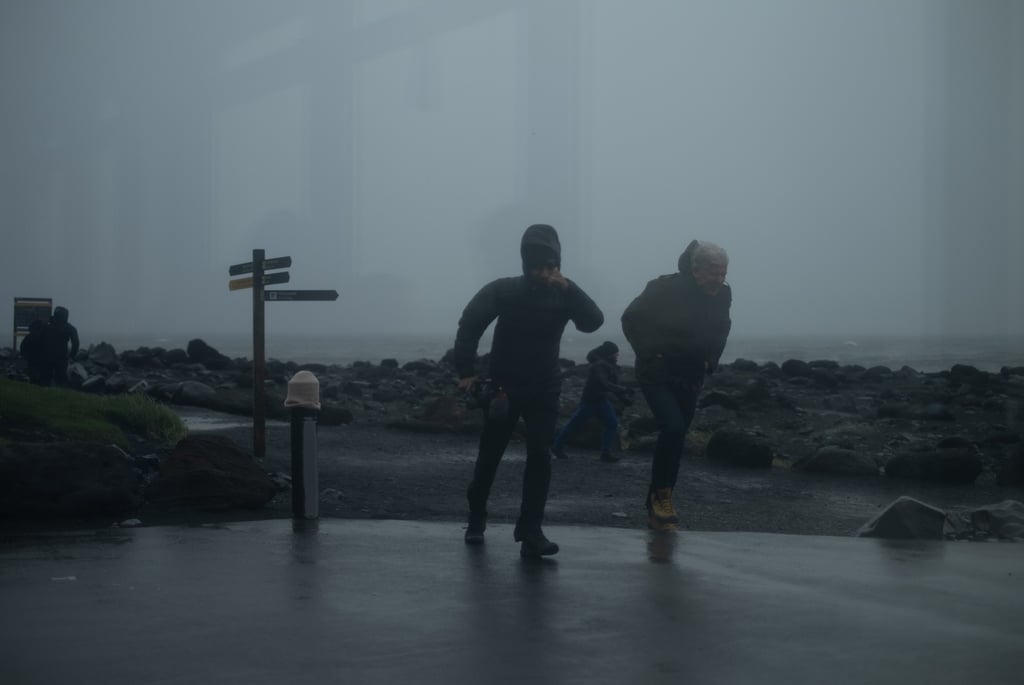AI vs. Human Art | Can Technology Ever Replace Artists?
In recent years, we've witnessed an explosion of AI-generated artwork flooding social media feeds, winning art competitions, and even selling for as much as £836,667 of dollars at auctions. This technological revolution has sparked heated debates among artists, collectors, and art enthusiasts worldwide. Many wonder: can algorithms truly create art comparable to human-made pieces?
CULTURE & SOCIETY


As someone deeply interested in technology and creativity, I've spent considerable time researching this fascinating intersection, immersing myself in the dialogue between artificial intelligence and human creativity. What I have found is that while AI-generated art continues to evolve rapidly, there are foundational qualities—rooted in lived experiences, emotional intent, and cultural resonance—that human artists bring to their work. These qualities ensure that, no matter how sophisticated algorithms become, the unique spark of human creativity will always maintain its unique value and position
The Essence of Art in Human Experience
Art has been central to human civilisation since our earliest cave paintings. The rock-art sites of Tadrart Acacus in my home country of Libya are a testament to that, still whispering of our shared beginnings thousands of years later. At its heart, art represents the expression of human creativity and imagination. It is the vessel for our deepest thoughts, our most private sorrows, and our collective triumphs. It bridges between individuals, communities and epochs, offering us glimpses of each other's souls and guiding us through our collective human existence, helping us understand and feel understood.
When we create art, we pour our lived experiences, cultural backgrounds, personal struggles, and deepest emotions into our work. Each brushstroke, musical note, or written word carries the weight of our unique human journey. For example, as I work on my novel, I find myself pouring my experience into expression—the combination of which is a story of another human life taking shape. This authenticity is something that cannot be replicated by algorithms, no matter how sophisticated, simply because anything created by AI does not emanate from a lived human experience.
The science behind creativity further emphasises its importance to human wellbeing. There is evidence to suggest that creating art activates the reward centre of the brain, lowers stress, allows you to focus deeply, improves brain function, and helps you process your emotions. These physiological benefits complement the psychological rewards of self-expression and connection that come from engaging with art as both creators and viewers.
The Artist Ghost in the Machine
To understand why AI art still feels somehow "other," we first need to understand how it works. Today's AI artwork is created using artificial intelligence techniques such as generative adversarial networks (GANs), style transfer algorithms, and deep-learning models. These systems analyse thousands or even millions of existing artworks, detecting patterns in composition, colour palettes, and textures, then "reassemble" those elements in novel ways. We’ll unpack this a little more later.
The user then feeds the AI a text prompt or reference image, lets the model parse millions of data points, and within minutes, they are presented with a new image. The results can be visually stunning and sometimes indistinguishable from human-made art to the casual observer.
The recent surge in AI-generated Studio Ghibli-style images, enabled by ChatGPT’s image tool, sparked intense debate between proponents of technological experimentation and defenders of artistic integrity. While enthusiasts celebrated the ability to instantly transform personal photos into whimsical, Miyazaki-esque scenes-like a German entrepreneur’s viral Ghibli-fied ragdoll cat, critics highlighted the stark contrast between AI’s rapid outputs and Studio Ghibli’s painstaking creative process. Describing the studio’s meticulous craftsmanship—a stark counterpoint to AI’s seconds-long generations—producer, Toshio Suzuki said, “We have 60 animators, but we are only able to come up with one minute of animation in a month. That means 12 months a year, you get 12 minutes worth of movie.”
Hayao Miyazaki’s resurfaced critique of AI art as “an insult to life itself”, originally directed at an AI-generated zombie animation’s “grotesque” lack of empathy, became a rallying cry for traditionalists. This chasm deepened as artists condemned the trend for undermining human skill and emotional intentionality, while tech advocates argued it “democratised” access to beloved aesthetics. Even OpenAI’s CEO, Sam Altman, changed his profile on Twitter into a Ghibli-style portrait. That said, the company later acknowledged ethical grey areas by blocking mimicry of living artists’ styles and said the new tool would take a “conservative approach” in the way it mimics the aesthetics of artists.

The controversy crystallised tensions between algorithmic convenience and the soulful, time-honoured labour defining Studio Ghibli’s legacy.
Tools like ChatGPT and various AI art platforms have made this technology increasingly accessible, allowing anyone to generate images with just a few text prompts. This “democratisation”—or perhaps more accurately, the “commoditisation” of creation has opened new possibilities for visual expression, but it also raises important questions about the nature of creativity and artistry.
The Limitations of AI Creativity
Despite impressive technological advances, AI-generated art still faces significant limitations that highlight the irreplaceable value of human creativity.
Perhaps the most oft-heard critique of AI-generated art is its lack of emotional authenticity. While AI can imitate the appearance of emotion in art, it cannot truly experience feelings. It is as though we sense the tangible absence of soul. We may not yet fully comprehend the mechanics of this intuition, but it seems we possess an almost instinctive ability to sense the spirit behind a painting, sometimes more powerfully than the physical manifestation before our eyes. This fundamental difference means that AI-generated work often feels hollow compared to human-created art that emerges from genuine emotional experiences.
AI art generators can only create based on what they've been trained on—existing human artwork. This means they're fundamentally derivative rather than truly original. What emotional responses AI art generates leverages the vast datasets of human-created art. This reliance on existing human creativity means AI is always one step removed from true innovation. While it can mix and match styles and content in novel ways, it cannot produce the revolutionary creative leaps that have defined art history's most significant movements.
Collaboration Rather Than Replacement?
Rather than viewing AI as a replacement for human artists, many creative professionals are embracing these tools as collaborators that expand their artistic possibilities. AI offers new ways for artists to collaborate with technology, potentially enhancing rather than diminishing human creativity.
This collaborative approach recognises AI as another tool in the artist's arsenal, like the camera was for painters or digital editing software was for photographers. Will we grow to adopt AI as an entirely separate genre of art—an artform in its own right? The key difference is that humans remain in control of the creative process, using AI to explore new techniques or overcome technical limitations while still infusing their work with human intention and emotion.
As with any technological advancement, the integration of AI in art will continue to evolve. The most likely outcome isn't replacement but transformation—new hybrid forms of creation that combine human creativity with algorithmic assistance.
Why Human Art Will Always Prevail
Despite the impressive capabilities of AI art generators, human-created art will always maintain its special significance for several compelling reasons.
Art has always been a reflection of the human condition—our joys, sorrows, triumphs, and struggles. Only humans can truly understand what it means to be human. Our art emerges from lived experiences, cultural contexts, and emotional realities that AI can mimic but never authentically share. This fundamental difference ensures that human art will always carry a depth and resonance that AI-generated work cannot achieve.
Human artists create with purpose and intent. Every colour choice, brushstroke, or compositional decision carries meaning and reflects conscious choices. By contrast, AI generates images based on statistical patterns without understanding the significance of its decisions. It chose blue simply because that’s what the prompt told it to do. There was no intentionality behind the choice; no psychological or emotional reasoning behind the decision. This intentionality gives human art a richness of meaning that algorithms cannot replicate.
Art serves as a bridge between human experiences, fostering empathy and understanding. When we engage with human-created art, we connect with another person's perspective— their unique way of seeing and interpreting the world. This human-to-human connection is fundamental to art's power and cannot be replicated in the relationship between a viewer and an algorithm.
Human art exists within rich cultural and historical traditions. Artists create not in isolation but as part of ongoing conversations spanning centuries of human creativity. Their work reflects and responds to cultural movements, historical events, and societal changes in ways that are meaningful precisely because they come from participants in those human experiences. We can relate to another’s art because we are part of the shared human experience.
There's something deeply spiritual about human creativity, the way it can surprise us, move us to tears, or completely change how we see the world. Resistance movements were born out of a single photo, painting or song. Art helped those unaffected (directly) by a war develop a deep understanding and empathy with their fellow human and, in turn, become their biggest advocate. This transcendent quality emerges from the combination of technical skill, emotional depth, lived experience, and that indefinable spark of inspiration that makes us human. AI may produce beautiful images, but it cannot access this same wellspring of creativity because it exists outside the human experience.
The Divine Gift
As we navigate this new era where AI can generate impressive visual content with minimal human input, it's important to remember what makes art truly meaningful. The value of art has never been solely about the final product but about the human journey of creation and connection it forges.
AI art will continue to evolve and find its place in our creative landscape. It may become a valuable tool for human artists, open new avenues for expression, and challenge us to reconsider our definitions of creativity. However, it will never fully replace the profound significance of art created by human hands and hearts.
Human-driven art will always prevail because it emerges from authentic lived experience, carries the weight of intentionality, fosters genuine connection, exists within meaningful cultural contexts, and embodies the transcendent nature of human creativity. These qualities ensure that, no matter how sophisticated AI technology becomes, art created by humans will continue to hold special significance and value in our society.
In a world increasingly dominated by algorithms and automation, perhaps the enduring power of human-created art will remind us of what makes our species truly unique: our capacity to transform our experiences, emotions, and ideas into creations that speak directly to the human soul.
